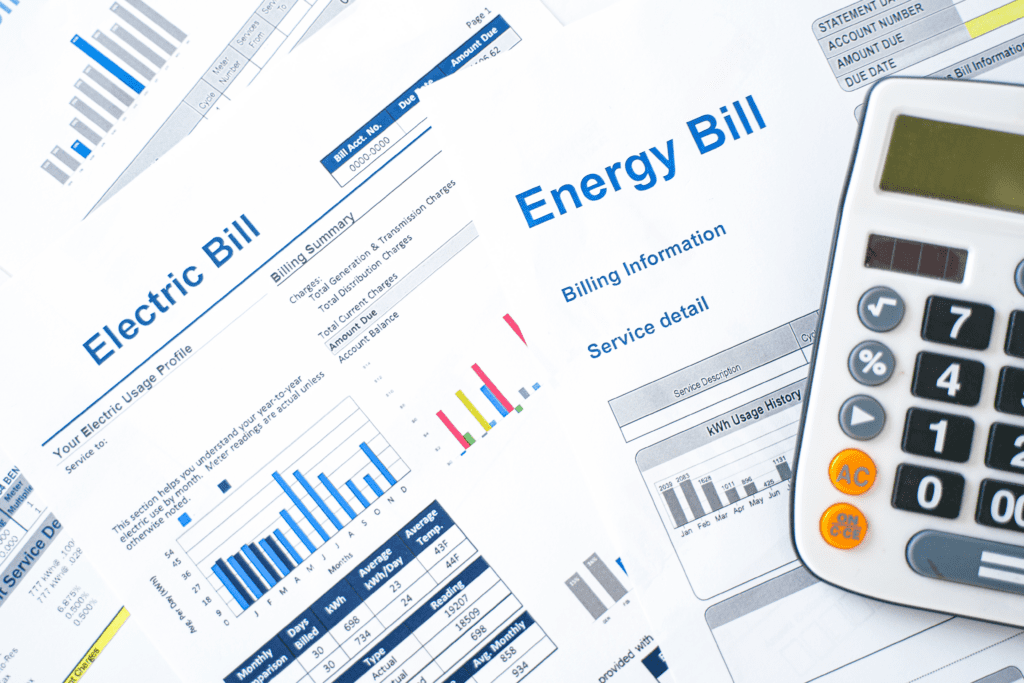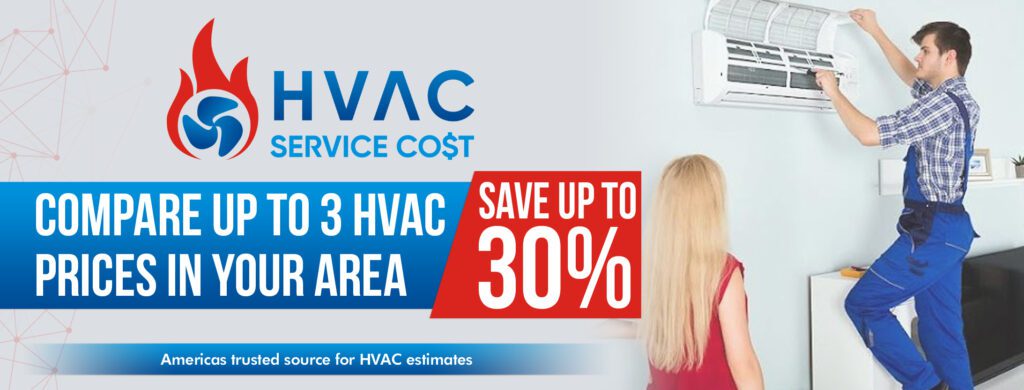
Cut the Cost of Your Next Energy Bill With These 7 Simple Steps
Reducing your home’s energy consumption is not only beneficial for the environment but also for your wallet. High energy bills can drain your monthly budget, and finding ways to decrease these expenses is a priority for many homeowners. Implementing effective energy-saving measures can lead to significant savings. Here, we outline seven practical steps you can take to reduce your energy bill, with a special focus on the benefits of HVAC services—a crucial aspect provided by our company to enhance your home’s energy efficiency.
1. Upgrade to Energy-Efficient Appliances
One of the most straightforward ways to cut energy costs is to replace old, inefficient appliances with newer, energy-efficient models. Look for appliances with the ENERGY STAR label, which signifies compliance with energy efficiency guidelines set by the U.S. Environmental Protection Agency. These appliances consume less energy and operate more efficiently, from refrigerators to washing machines, and they can significantly lower your energy bills. Here, we explore some of the key appliances that can have the biggest impact on reducing energy consumption in your home.
Refrigerators
Refrigerators are among the most energy-intensive appliances in the home, operating 24/7. New energy-efficient models use advanced technology like more effective insulation and compressors that require less energy to maintain the same cooling levels as older units. By replacing a refrigerator that’s over ten years old with an ENERGY STAR-rated model, you can save up to 40% on the appliance’s energy use, making it one of the most impactful changes you can make.
Washing Machines
Modern energy-efficient washing machines use significantly less water and energy per load compared to older models. They feature better water management systems and high-efficiency motors that reduce energy consumption. Some also have load-sensing technologies that optimize water usage based on the weight of the clothing. Transitioning to an ENERGY STAR-certified washing machine can save you about 25% on energy and 33% on water usage.
Dryers
Energy-efficient dryers include features such as moisture sensors that detect when clothes are dry and automatically shut off the dryer, which prevents energy wastage. While dryers are generally heavy on energy consumption, newer models have improved insulation and more efficient heat exchangers. Upgrading to a model with a high ENERGY STAR rating can reduce energy use by 20% compared to conventional dryers.

Dishwashers
Modern dishwashers have made significant advancements in efficiency. They now include energy-saving wash cycles, effective water heating mechanisms, and improved water jets that clean more thoroughly while using less water. ENERGY STAR-rated dishwashers can save nearly 5,000 gallons of water and $40 in utility costs each year, as well as use 25% less energy than the federal minimum standard for energy consumption.
Heating and Cooling Systems
Although not often thought of as “appliances” in the traditional sense, HVAC systems are crucial components of home energy use. Upgrading to a high-efficiency heating, ventilation, and air conditioning (HVAC) system can significantly reduce energy costs, especially if the existing system is over 10 years old. Look for systems with a high SEER (Seasonal Energy Efficiency Ratio) and EER (Energy Efficiency Ratio) ratings. Modern systems often include programmable thermostats that further enhance energy savings by optimizing temperature settings based on usage patterns.
Water Heaters
Water heating is a major contributor to energy expenditure in most homes. Energy-efficient water heaters, such as tankless, on-demand models, use energy only when hot water is needed, which significantly reduces energy wastage. Solar water heaters and heat pump water heaters are other efficient options that use sustainable sources to reduce energy use.
Upgrading to energy-efficient appliances represents a significant upfront investment but offers substantial long-term savings and environmental benefits. By focusing on the appliances that consume the most energy, such as refrigerators, washers, and HVAC systems, homeowners can see a dramatic decrease in energy bills. Moreover, many governments and utility companies offer rebates and incentives for purchasing ENERGY STAR-rated appliances, making upgrades more affordable and attractive. Remember, each step towards energy efficiency not only benefits your household budget but also contributes to a larger global effort to conserve resources and reduce environmental impact.

2. Seal Windows and Doors
Drafty windows and doors can lead to significant energy loss. Sealing these leaks with weather stripping or caulk can keep the warm or cool air inside your home, reducing the workload on your heating and cooling systems. This simple fix not only helps maintain a comfortable indoor climate but also decreases your energy consumption.
3. Install a Programmable Thermostat
A programmable thermostat is a smart investment for any homeowner looking to reduce energy usage and manage home heating and cooling costs more effectively. This device allows you to automate the temperature settings in your home based on your schedule, seasonal changes, and personal preferences, leading to significant energy savings without sacrificing comfort. Here’s an in-depth look at how programmable thermostats work and why they are an essential tool for energy efficiency.
How Programmable Thermostats Work
Programmable thermostats are advanced devices that can be set to automatically adjust the temperature of your home at different times of the day or night. They operate based on the programming schedules you create, which can usually be divided into weekday and weekend schedules, with several periods per day (e.g., morning, day, evening, night).
Setting Up Schedules
You can set your thermostat to heat or cool your home to a desired temperature during times when you are typically at home and active, and to conserve energy by relaxing the temperature setting when you are away or asleep. For example:
- Wake Time: Program the thermostat to start heating or cooling your home right before you wake up.
- Day Time: Set the thermostat to a lower heating or higher cooling temperature during the day when the house is empty.
- Evening: Have the thermostat adjust to a more comfortable temperature by the time you return home.
- Night: Set the thermostat to reduce heating or cooling during sleeping hours.
These adjustments are made automatically once the thermostat is programmed, ensuring optimal comfort when you are home and energy savings when you are not.

Why Programmable Thermostats Are Effective
Energy and Cost Savings
The primary benefit of using a programmable thermostat is the reduction in energy usage, which translates directly into lower utility bills. By maintaining lower temperatures in winter and higher temperatures in summer when you are not at home, you significantly reduce the energy needed to heat or cool your house. The U.S. Department of Energy estimates that you can save as much as 10% a year on heating and cooling by simply turning your thermostat back 7°-10°F for 8 hours a day from its normal setting.
Consistent Comfort
Programmable thermostats eliminate the discomfort of entering a cold or hot home because the temperature is adjusted before you arrive. This ensures that your home is always at a comfortable temperature without the need for manual adjustments, which are often forgotten or delayed.
Zoning Capabilities
Many programmable thermostats offer zoning controls, which allow you to set different temperatures in different areas (zones) of your home. This is particularly effective in larger homes where different rooms may have different heating or cooling needs based on size, location, or exposure.
Integration with Smart Home Systems
Modern programmable thermostats often come with features that allow them to be integrated into smart home systems. They can be controlled remotely via a smartphone app, and some models even learn your preferences and habits over time and adjust settings automatically for even greater efficiency and comfort.
Environmental Impact
Reducing your home’s energy consumption contributes to less overall demand from power plants, thereby reducing your personal carbon footprint. This is an important consideration for environmentally conscious homeowners.
Installation and Usage Tips
- Professional Installation: While many programmable thermostats are designed for DIY installation, professional installation is recommended to ensure that the device is correctly configured for your heating and cooling system.
- Regular Updates: As your schedule changes with seasons or life events, update the settings on your thermostat to maintain efficiency and comfort.
- Maintenance: Like any other part of your HVAC system, keep your thermostat well-maintained. Ensure it is free from dust and check its functionality periodically.

4. Utilize Smart Power Strips
Many devices continue to draw power even when they are turned off, a phenomenon known as “phantom load.” Smart power strips can detect when a device is in standby mode and cut off power, preventing unnecessary energy consumption. By using these power strips for your electronics, you can ensure that you’re only using energy when it’s truly needed.
5. Optimize Your Home’s Insulation
Proper insulation in your home’s walls, attic, and floors keeps the desired temperature inside your home stable by preventing heat from escaping during the winter and keeping it out during the summer. This can dramatically reduce the amount of energy needed for heating and cooling, which translates into lower energy bills.
6. Regular HVAC Maintenance and Upgrades
Regular maintenance of your HVAC system is crucial not only for the longevity of the equipment but also for enhancing its efficiency and reducing your energy bills. An HVAC system that is well-maintained operates more efficiently, uses less energy, and costs less to run. Here’s a detailed look at how regular HVAC maintenance can help you cut energy costs significantly.
Why HVAC Maintenance is Essential
HVAC systems are complex machines that consist of numerous components that must all work together effectively to heat or cool your home efficiently. Over time, these components can wear out, get dirty, or become misaligned, which can significantly reduce the system’s overall efficiency.
Improved Efficiency
Regular maintenance ensures that every part of your HVAC system is working as efficiently as possible. During a maintenance check, technicians will clean and replace filters, check and seal ductwork, lubricate motors, and inspect settings and controls. This attention helps the system perform at peak efficiency, reducing the amount of energy it uses.
Prevention of Major Issues
During routine maintenance, technicians can identify and fix small issues before they turn into bigger, more costly problems. For example, replacing a worn belt before it breaks can prevent damage to other parts of the system. Preventative maintenance not only saves energy but also extends the lifespan of your HVAC system, providing better value for your investment.
Ensured Comfort
Regular maintenance ensures that your HVAC system distributes air evenly and consistently throughout your home. This prevents scenarios where the system has to work harder and use more energy to maintain comfortable temperatures in all areas of your home.

Components of HVAC Maintenance
Understanding what goes into HVAC maintenance can help you appreciate how it contributes to energy savings:
Cleaning or Replacing Air Filters
One of the simplest, yet most effective, maintenance tasks is changing the air filters regularly. Dirty filters restrict airflow, forcing the system to expend more energy to circulate air. Clean filters maintain healthy airflow, which reduces energy consumption and costs.
Checking and Sealing Ductwork
Leaky ducts can lose up to 20-30% of air before it reaches your living spaces, causing your system to work harder to heat or cool your home. Technicians check for leaks or holes in the ductwork during routine maintenance and seal them if necessary.
Calibrating the Thermostat
Technicians will check the thermostat to ensure it is working correctly, as a malfunctioning thermostat can cause the HVAC system to run longer than necessary, increasing energy use. Upgrading to a smart thermostat, as discussed earlier, can further enhance energy savings.
Inspecting and Cleaning Coils
The evaporator and condenser coils in your HVAC system are crucial for an efficient heat exchange. Over time, these coils can become dirty, which impedes their ability to transfer heat and forces your system to work harder. Cleaning these coils regularly ensures they operate efficiently.
Checking the System’s Refrigerant Levels
Proper refrigerant levels are vital for your HVAC system to operate efficiently. If the levels are too low, the system cannot cool the air effectively, increasing energy consumption. Technicians will check these levels and refill if necessary.
The Cost-Saving Impact of Regular HVAC Maintenance
Regular maintenance can reduce your HVAC system’s energy consumption by up to 15-20%. Considering that heating and cooling can account for about half of your total energy bill, this reduction can lead to significant savings. Moreover, by extending the lifespan of your system and avoiding costly HVAC repairs, regular maintenance contributes to further financial benefits over time.
7. Consider Solar Panels
Installing solar panels on your roof can significantly reduce your energy bill by generating your own electricity. With advancements in technology, the cost of solar panels has decreased, making them a more feasible option for many homeowners. Solar energy not only cuts your energy costs but also increases your home’s value and reduces your carbon footprint.
Reducing your energy bill requires a combination of strategies, from upgrading appliances to enhancing your home’s insulation and utilizing efficient HVAC services. By taking these steps, you can enjoy a more comfortable home environment while significantly lowering your energy costs. Remember, investing in energy efficiency not only saves money but also contributes to a more sustainable planet. For those looking to make impactful changes, our professional HVAC services provide personalized solutions that ensure your heating and cooling systems are efficient, effective, and economical.




Leave a Reply